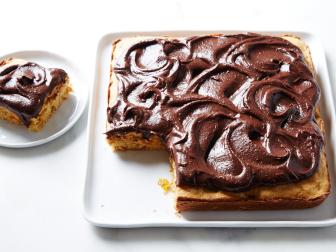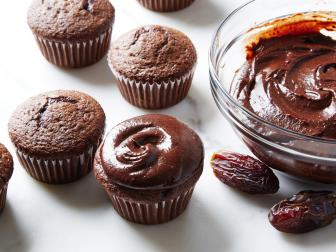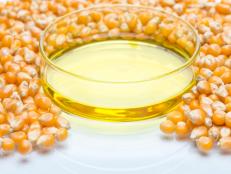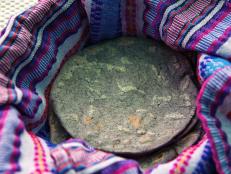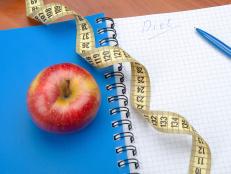Is High-Fructose Corn Syrup Really That Bad for You?
Here’s how it stacks up against other sweeteners.

seksan Mongkhonkhamsao/Getty Images
You’ve likely heard that high fructose corn syrup is bad for you. You probably know to scan food labels to make sure it’s not there. And many food manufacturers have stopped using it. But is this added sweetener really as unhealthy as people say? What’s the real deal with high-fructose corn syrup?
What Is High-Fructose Corn Syrup?
High-fructose corn syrup (HFCS) started making its name in the 1960s and its use peaked in the late 1990s as a sweetener in packaged foods and beverages. Granulated sugar is made from a mixture of two single sugars (a.k.a. monosaccharides): glucose and fructose. Compared to corn syrup which is 100-percent glucose, HFCS is “high” in fructose clocking in at 55-percent fructose and 45-percent glucose.
HFCS is made from corn which goes through a “wet milling” process. The starch is separated from other parts of the corn and used to make a syrup, which is 100-percent glucose. The syrup is further processed by refining and filtering into liquid mixtures to become the combination of fructose and glucose.
Interestingly, the name HFCS is rather misleading. Yes, HFCS has more fructose compared to corn syrup which is made of 100-percent glucose. However, other common sweeteners are higher in fructose than HFCS. For example, agave syrup is about 82-percent fructose and 18-percent glucose. HFCS is a touch higher in fructose than table or granulated sugar (a.k.a. sucrose).
How Is High-Fructose Corn Syrup Metabolized?
Just like table sugar, high-fructose corn syrup provides four calories per gram. Additionally, HFCS and other sugars are digested similarly. Once HFCS is digested (i.e. broken down) into its components (glucose and fructose), the glucose gets taken up by the cells with the assistance of insulin. Fructose is metabolized in the liver and doesn’t need assistance from insulin to be absorbed. Once in the cells, glucose and fructose are used to provide energy.
A randomized control trial published in the Journal of Nutrition compared the effects of consumption of beverages that contained honey, sucrose and HFCS on various cardiometabolic outcomes. Researchers found no differences in the response of blood sugar or other cardiometabolic outcomes in people who drank beverages sweetened with any of the three sweeteners daily for two weeks.
When you eat any kind of sugar on its own, your blood sugar spikes. Someone who does not have diabetes will be able to bring that blood sugar down as the pancreas will release enough insulin to do so. However, these spikes may feel like “sugar rushes” and lead to a feeling of low energy, and increased thirst and urination. You may feel a spike of energy or alertness, but it will likely be short-lived, followed by a sugar “crash” that may make you feel tired or low-energy. In order to allow the blood sugar to be more slowly absorbed into your blood, adding fiber, fat or protein from other foods can help slow down the absorption of sugar. So, if you’re eating a food that contains HFCS, combine it with a source of protein, fiber or fat.

Mitch Diamond/Getty Images
Why Is High-Fructose Corn Syrup Used Commercially?
High-fructose corn syrup is used primarily as a sweetener; it’s generally used only in commercially produced foods like candies, beverages, baked goods, canned and packaged foods, condiments, jams, yogurts, fast-food items and other sweetened foods.
However, high-fructose corn syrup can be added by food manufacturers for reasons beyond sweetening. In baked goods, HFCS provides surface browning, moisture, structure and texture; in beverages, it provides body and flavor; in breads, jams and jellies, HFCS acts as a preservative; and in other items, it is used to stabilize emulsions and add flavor.
How To Keep Sugar at Bay
Although HFCS use began in the late 1960s, it peaked in 1999. A study published in the American Journal of Clinical Nutrition dove into the National Health and Nutrition Examination Survey. The survey compared data from 1999-2000 and 2007-2008, and, interestingly, revealed that added sugar consumption decreased over time. However, researchers pointed out that added sugar consumption still exceeds the limit recommended by the 2020-2025 dietary guidelines for Americans. About six in 10 Americans eat more added sugar than recommended.
High-fructose corn syrup is categorized as an added sugar. According to the 2020-2025 dietary guidelines for Americans, it’s recommended that people consume no more than 10 percent of their total calories per day from added sugar. For the average 2,000-calorie diet, that means no more than 200 calories. That equates to a total of 12.5 teaspoons of granulated sugar – which is generous.
As a registered dietitian, I recommend choosing when to consume added sugar wisely. Use it in foods that are full of nutritional value, but become more palatable with a bit of added sugar. For example, adding a teaspoon of honey or agave can make a bowl of fiber-filled oatmeal more enjoyable. Topping it with berries and chopped nuts can round it out and make it a complete meal.
Here are a few more ways you can reduce consumption of high-fructose corn syrup or other added sugars:
- Check ingredient labels.
- Swap sugar-sweetened beverages, like soda, for water or sparkling water. You can also add lemon or orange slices to flavor water.
- Swap packaged snacks like cookies and candy for whole foods like nuts and fruits.
- Bake your own treats instead of going store-bought. You can have better control over the ingredients, including added sugar.
Try These Fruit-Sweetened Treats
Bottom Line: High-fructose corn syrup is another form of added sugar in our food supply. It is no better or worse than other added sugars. But like all added sugars, be mindful of how much you consume in order to keep within the daily recommended amount.
*This article was written and/or reviewed by an independent registered dietitian nutritionist.
Related Content:

























